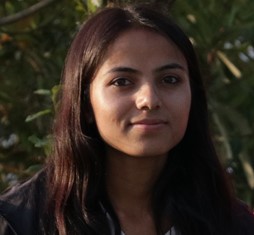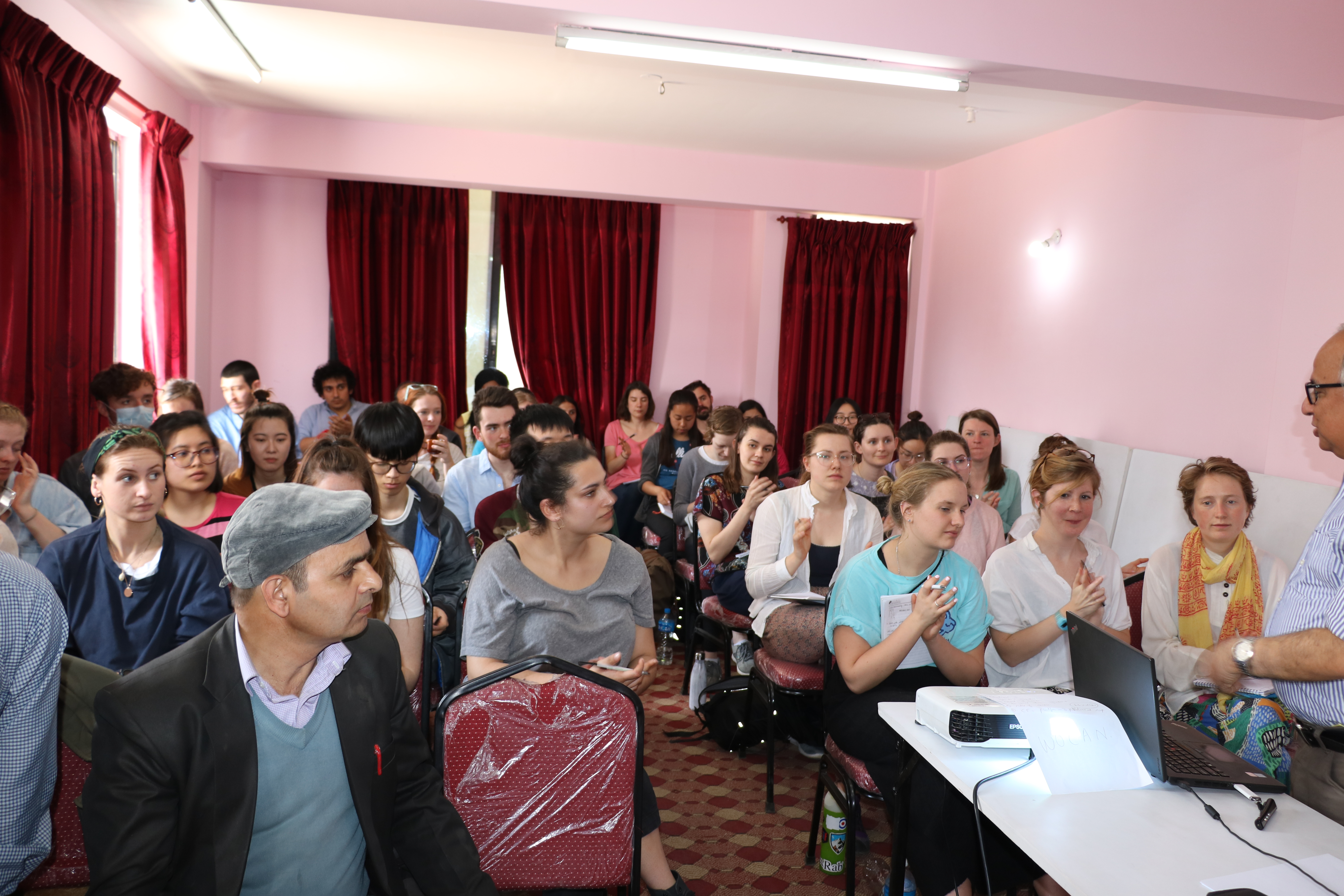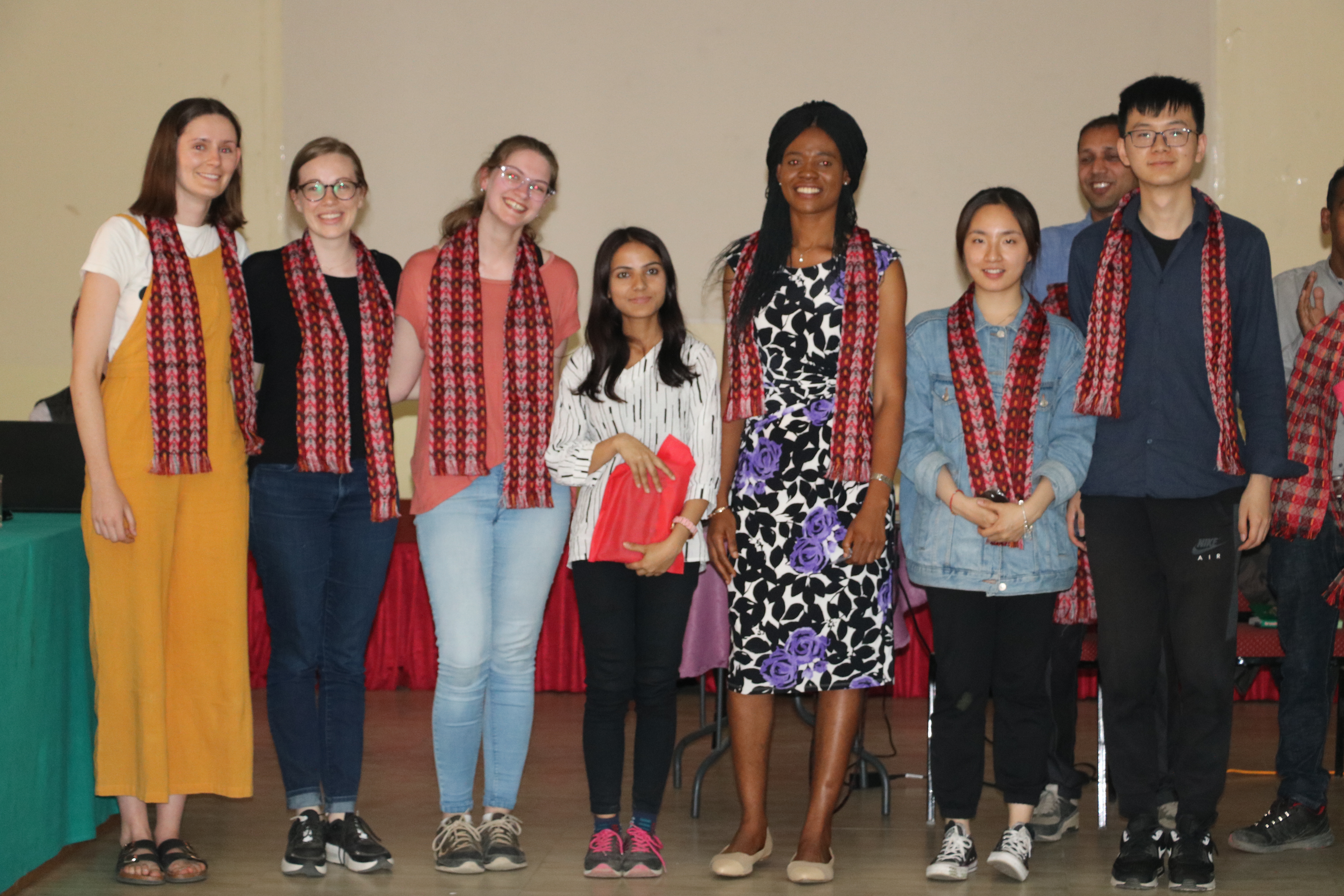SIAS- UoE field course: Mutual learning experience
 Parbati Pandey, Masters Student from Nepal
Parbati Pandey, Masters Student from Nepal
It was the beginning of the New Year, and we were on the beginning of our new experience too. 29 Master’s in Environment & Development students from the University of Edinburgh, UK accompanied by 4 PhD students and 2 lecturers were coming to Nepal for the field course. They had come to Nepal to learn about Community Forestry, Conservation and Livelihoods, Climate Change, Water Resource Management, Pollution, Disaster risk reduction and Gender Roles in Natural Resource management.
I was already excited looking at the topics of the field course as every single thing was related to my course of study. The excitement doubled because this time I was going to learn not just in class lectures but also through field and project works along with my peers both from Nepal and from an International University. Chances of meeting and interacting with the related stakeholders and learning about the prospects and challenges was an icing on the cake.
During nearly two weeks of the field- course, there was an exchange of so many ideas and experiences. We talked about our hobbies, the topics of our dissertation works, teaching learning process of our universities and how the environmental concerns are emerging gradually in the global scale.
Apart from the lectures, we were also involved in the research project work where we did participatory mapping, surveys and interviews with the public and experts of our respective topics. I was in a team that did research on air pollution in Kathmandu valley. Others had their research topics on waste management, water access, public- private partnership and gender issues and perceptions on recycling and reuse. This research experience was a great learning for me personally as I have not much involvement in participatory surveys. Also, participatory mapping for the public surveys was so useful to take answers from the respondents as they get the visual interpretation of the places of their commute. Participatory mapping tool too was new for me and it took a while to understand about it and the approaches involved. I had some roles of translation on this day and this was the day when I realized how personal connection and rapport building is necessary to get a good data from the respondents. Despite of the language barrier, they often showed certain gestures so that the foreign students would also understand what they were trying to say.
Incidents like losing track of the office while following Google maps made some of the students realize that informal and verbal communications work better than technology in most of the cases. These kinds of incidents often put a question to our technology and sense of realization time and often. Nepal has made significant progress in terms of information, communication and technology, albeit there is a lot to improve. Acceptability is what the main disease of us Nepalese that we often accept the things as they are rather than trying ways to solve it or make it better. But, with the limitation of the resource we are always left behind as we are also deprived of the alternatives.
Also, it was interesting to see how the students in Edinburgh who did not have the experience of air pollution so keen learn about the situation of Kathmandu within few days. Another thing that I was fascinated with was the inquisitiveness of the students. They keep on asking questions and counter questions until they get a satisfactory answer. Looking at our background of study, where asking too many questions is not entertained both by our teachers and our fellow students, I was totally amazed by their teaching and learning process , about how they gather enough data and information before they come into a conclusion. They go into depth of any topic, they have an interest on, be it on their academic course or it might be on some mythological stories when they ask “why Satidevi’s parents did not take her permission to get married?” OR “why lord Shiva put the Elephant’s face to Ganesh’s body and not that of a human face created by himself?” All I could say was “I have no idea! Or it’s a mythological story! ”
What I learnt from this field course and the students (representing both global north and south) is that whatever the situation might be, nobody is devoid of problems. The context might be different, the needs might differ but we all have our limitations. But the thing is how we accept it and work hard to make through it. These kinds of field works play a crucial role in student life as they teach us the lessons that a book or a professor cannot do as rightly said by Benjamin Franklin –“Tell me and I forget. Teach me and I remember. Involve me and I learn”. Namaste!
*Ms. Pandey participated in the course from Nepal.
Publish date:- 2019/05/02
“Views expressed here are personal and not associated with any affiliated organisations”




